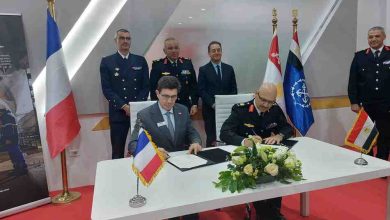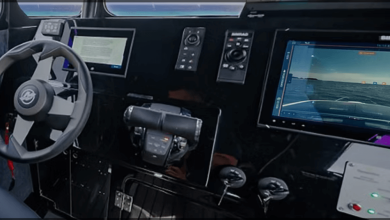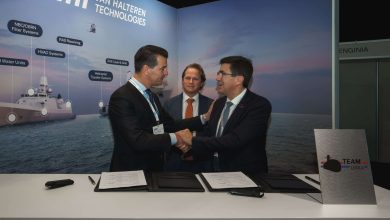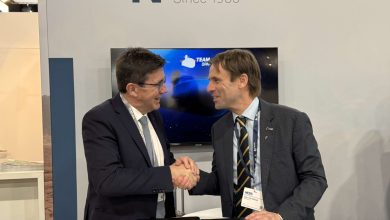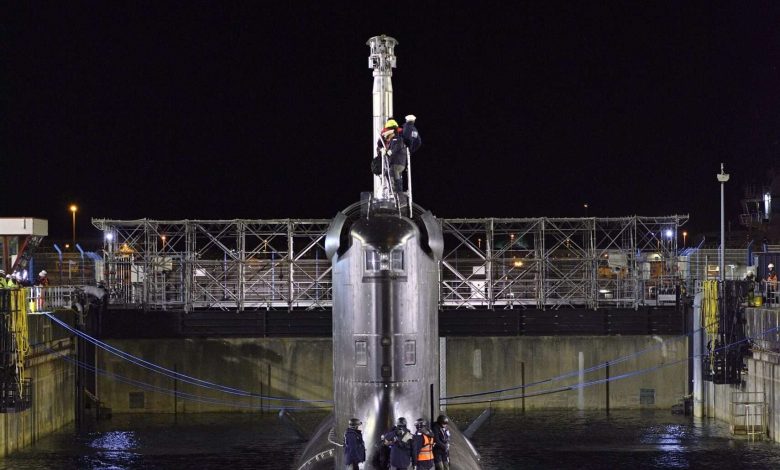
“SSN Duguay-Trouin Embarks on Its Exciting Sea Trial Journey”
Two years subsequent to the launch of the Suffren, the inaugural Barracuda-class nuclear assault submarine, a significant achievement has been attained in the production of these SSNs, with the initial sea trials of the Duguay-Trouin, on March 27th, 2023. The submarine will now undergo various assessments to evaluate its capabilities prior to its deployment, set for later this year.
The Duguay-Trouin is the second vessel in the Barracuda initiative, orchestrated by the French defense procurement agency (DGA) in collaboration with the French Atomic Energy and Alternative Energy Commission (CEA) for the nuclear systems segment. This initiative aims to succeed the Ruby-class SSNs that are currently operational within the French Navy. Naval Group is responsible for the crafting of these submarines, encompassing both their design and assembly, along with the production of primary components for the nuclear systems developed in partnership with TechnicAtome. Additionally, Naval Group handles logistics and maintenance of the submarines in Toulon.
This batch of sea trials follows the divergence of the nuclear reactor that occurred in September 2020 and the dock evaluations that have been conducted since the submarine’s launch in 2021. The operations sequentially occurred in the assembly hall and in both dry and water-filled docks to assess equipment and systems. These trials were executed by collaborative teams from Naval Group, TechnicAtome, and French authorities.
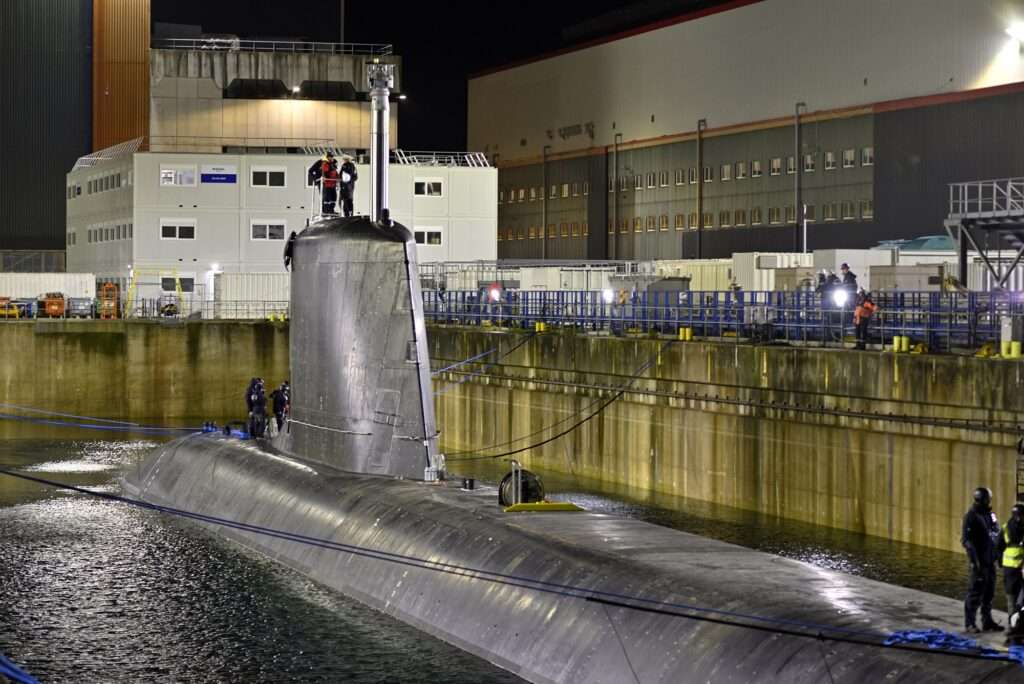
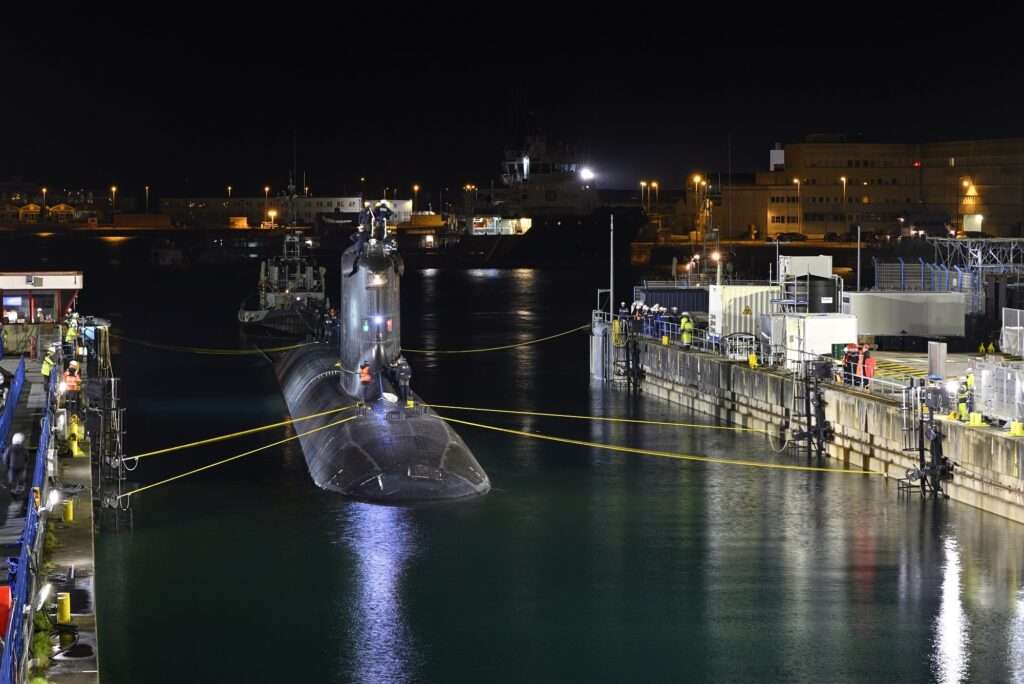
The Barracuda series is making substantial progress: the remaining four submarines within the program (Tourville, de Grasse, Rubis, and Casabianca) are presently under development, at various stages of advancement, with their deliveries staggered until 2030. With a service life exceeding 30 years, the Barracuda program secures submarine operations until at least 2060, establishing it as one of the principal weapon systems of this era.
Pierre Eric Pommellet, Chief Executive Officer of Naval Group, stated: “The Barracuda series is central to our industrial strategy for submarines. It harnesses our expertise, our technological superiority, and our ability to evolve and innovate continuously. I want to commend the steadfast commitment of the design and production teams at Naval Group and its associates, including TechnicAtome, as well as those from DGA, CEA, and the French Navy. The attainment of this latest milestone serves as a testament to the proficiency of the French naval industry. This triumph ensures an unparalleled defense mechanism with a high level of industrial autonomy, bolstering France’s sovereignty.”
A local and national industrial achievement
The creation of these submarines amalgamates a multitude of extraordinary skills and expertise, especially in advanced technological fields. The Barracuda program leverages the competencies of all Naval Group facilities as well as those of TechnicAtome and numerous partner enterprises.
This initiative results from the collaborative efforts of countless partners across the French defense industrial and technological base, who have cooperated with Naval Group for decades:
- Many years were essential to explore the feasibility of the project and lead to the definition of a submarine that addresses the operational requirements of this particularly ambitious undertaking on technological and military fronts;
- Since the inception of the project, nearly 10,000 personnel from the program management and industrial subcontracting chain have been involved in the Barracuda program;
- A total of 2,500 individuals (including around 800 from Naval Group subcontractors) are currently engaged in the Barracuda series;
- Since 2015, between 400 and 600 personnel have been permanently dedicated to the production of the Duguay-Trouin;
- This signifies a total of 13 years of labor or 7.5 million hours.
Barracuda: French excellence in defense technology
The Barracuda is the submarine of the 21st century, expertly crafted to fulfill the operational demands of contemporary and future naval forces. It incorporates extensive operational functionalities and cutting-edge technologies. More adaptable, higher-performing, and better-armed than its predecessors, the Suffren-class SSN is designed to travel faster and farther. It is structured to dominate all types of maritime environments, from the open ocean to shallow waters.
This vessel is furnished with a nuclear propulsion system that provides an exceptional operational range and stealthiness. It also features communication capabilities for effective integration within a naval task force.
The Suffren-class SSN ranks among the globe’s stealthiest submarines. This concealment, combined with advanced detection functionalities, ensures its acoustic supremacy. More discreet, with enhanced endurance and capabilities, these submarines also exhibit greater maneuverability and mobility empowered by the latest navigation and communication technologies, including a centralized and more automated helm. A significant innovation involves the optronic mast, replacing the traditional telescopic mast, which enhances visual data collection and dissemination among the crew. This addition, when paired with sophisticated detection capabilities, secures the dominance of these SSNs in intelligence missions.
The Barracuda-class submarines will also furnish the French Navy with deep strike capabilities, courtesy of MBDA’s naval cruise missiles (NCM). They are likewise equipped with the F21 heavyweight torpedo produced by Naval Group and the SM39 anti-ship missile from MBDA. These SSNs facilitate the stealthy deployment of Special Forces underwater, particularly owing to its “divers hatch” and the optional transport of a dry deck shelter enabling the launch of unmanned underwater vehicles.
Technical specifications of the Barracuda SSNs
- Surface displacement: 4,700 tonnes;
- Diving displacement: 5,200 tonnes;
- Length: 99 metres;
- Diameter: 8.8 metres;
- Armament: naval cruise missiles, F21 heavyweight wire-guided torpedoes, modernized Exocet SM39 anti-ship missiles;
- Hybrid propulsion: pressurized water reactor derived from the reactors on board the Triomphant-type SSBN and Charles-de-Gaulle aircraft carrier, two propulsion turbines, two turbo generators, and two electric motors;
- Crew: 65 crew members + commandos;
- Availability: > 270 days per annum.



